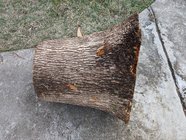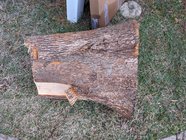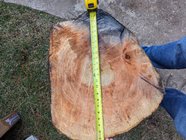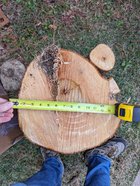I have been blessed with this large camphor stump and I'm wondering what would be the best way to spilt it? As you can see there are cracks through the pith on both sides. Unfortunately they're at different angles from each other. The bottom 8 inches flairs out, I could cut that piece off and then reassess and split the larger piece following the crack or I could cut off the bottom and top 6 to 8 inches off, reassess and then split the remaining piece. I'm considering the first idea but wanted to ask the group for any better suggestions.









